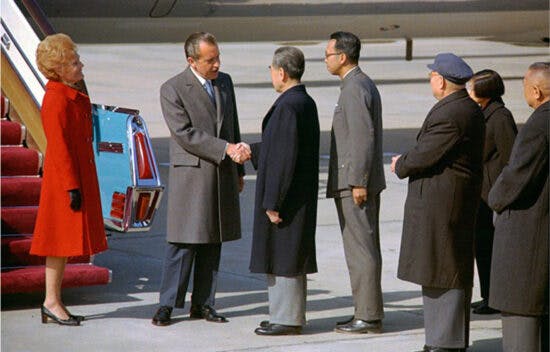



The President as Chief Diplomat
5 items

Richard Nixon Opens Diplomatic Relations with China
Essay - 2643 Words
Essay
2643 Words
Why did President Nixon visit China during the 1970s?

The President as Chief Diplomat
Essay - 1301 Words
Essay
1301 Words
This is an introductory essay from Presidents and the Constitution.

Chief Diplomat: Presidents and the Constitution
Video
Video
5 Min
The Constitution's principle of separation of powers is reflected in the President's power to make treaties with the advice and consent of the Senate. The Constitution goes on to require that two-thirds of Senators present must approve a treaty before it can be ratified. As "Chief Diplomat" for the nation, the President represents the United States to other countries, and directs our foreign policy. Various Presidents in our history have approached the concept of "advice and consent" differently, and have had varying degrees of success at persuading Senators of the wisdom of the treaties they have negotiated. George Washington was aware that his actions would set a precedent as to the meaning of the term "advice and consent." Many of his decisions with respect to Jay's Treaty also helped clearly define the separation of powers. Woodrow Wilson all but rejected the Senate's advice of the Treaty of Versailles, and for the first time in American history, the Senate rejected a peace treaty. Perhaps learning from history, Jimmy Carter took a different and more accommodating approach, winning ratification of the initially unpopular Panama Canal Treaties.
5 Min

George Washington’ Foreign Policy: Comparisons across U.S. History
Lesson
Lesson
Use this lesson at the end of the unit to review foreign policy throughout U.S. history.
